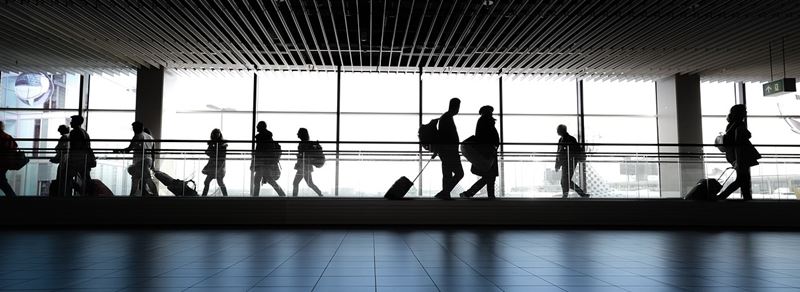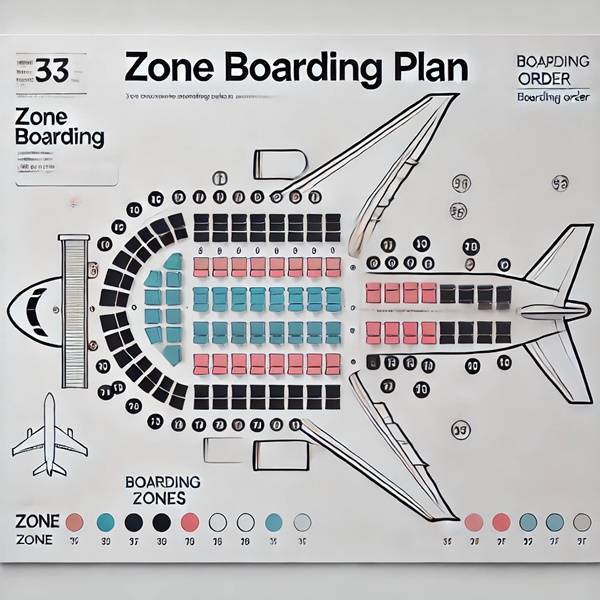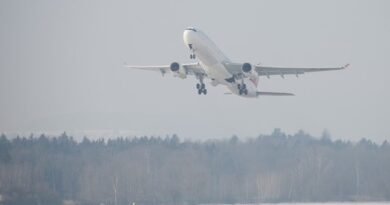Unlocking the Secrets of Zone Boarding: A Journey to Stress-Free Air Travel
Air travel involves numerous processes, and boarding is a crucial one that can impact the entire flight experience. Zone boarding is a method adopted by many airlines to streamline the boarding process, enhance efficiency, and improve passenger comfort. This approach, developed to minimize congestion and expedite seating, involves dividing passengers into groups or zones based on various criteria such as seat location and fare class. Understanding ZB not only helps passengers have a smoother boarding experience but also sheds light on the operational strategies of airlines aiming to maximize punctuality and passenger satisfaction.
What is Zone Boarding?
Zone boarding is a process used by airlines to board passengers onto an aircraft in a structured and organized manner. It involves dividing passengers into specific groups or zones and calling them to board in a sequential order. This method is designed to streamline the boarding process, reduce congestion in the boarding area, and improve overall efficiency.
In zone boarding, each passenger is assigned a zone or group based on various factors such as ticket class, frequent flyer status, or seat location. Passengers in higher priority groups, such as first-class or business-class passengers, passengers with special needs, or those requiring extra time or assistance, are typically assigned to board earlier than others. The remaining passengers are then called to board in subsequent zones or groups, moving from the back of the aircraft towards the front.

Zone Boarding Variations Between Airlines
Most major airlines around the world implement zone boarding. However, it’s worth noting that specific zone configurations and names may vary between airlines. Some common zone names used in ZB processes include:
Pre-boarding: This zone is reserved for passengers who require additional time or assistance, such as passengers with disabilities, small children, or elderly passengers.
Priority boarding: This zone is usually for first-class or business-class passengers, as well as high-status frequent flyers.
Zone 1, Zone 2, etc.: The remaining passengers are divided into several sequential zones, often starting from the back of the aircraft and moving forward. The specific number of zones can vary depending on the airline and aircraft size.
American Airlines uses nine boarding groups. Groups one to four include first-class, business, frequent flyers, and military personnel. Group five, “Main Cabin Extra,” boards next. Groups six to eight board by seat numbers. Group nine, the last group, consists of basic economy passengers. This method ensures efficient and orderly boarding. It reduces ground time and enhances the passenger experience.
Tips for a Smooth Zone Boarding Experience
Passengers should follow these tips for a smooth zone boarding experience:
- Arrive Early at the Gate: Arriving at the gate well ahead of the boarding time gives you ample opportunity to locate your assigned zone, double-check your belongings, and mentally prepare for boarding without rushing.
- Keep Your Boarding Pass Accessible: Ensure your boarding pass is easily accessible, whether it’s a physical copy or on your mobile device. This facilitates quick verification of your zone assignment by airline staff and avoids unnecessary delays.
- Optimize Your Carry-On Luggage: Pack efficiently to minimize the size and number of your carry-on items. This not only helps in swiftly locating overhead bin space but also reduces congestion and stress for both you and your fellow passengers.
- Practice Patience and Cooperation: Follow the instructions provided by airline personnel meticulously. Boarding in the designated zone not only ensures a smooth process but also enhances the overall boarding experience for everyone. Demonstrating patience and cooperation can significantly reduce boarding time and improve efficiency.
- Know Your Zone’s Benefits: Familiarize yourself with the benefits associated with your boarding zone. Some airlines offer perks like priority access to overhead bins or early access to the aircraft, which can enhance your travel experience.
- Engage with Airline Updates: Stay informed about any updates or changes in the boarding process. Use the airline’s mobile app or announcements. This keeps you prepared for any last-minute adjustments.
Efficient Boarding for a Better Flight Experience
Zone boarding divides passengers into groups based on their seating areas on the plane. Priority groups, such as first-class or elite status passengers, board first. This method speeds up the boarding process, reduces the time the aircraft spends on the ground, and ensures a smoother, more organized boarding experience for all passengers. By boarding in zones, airlines can manage overhead bin space more efficiently and decrease congestion, resulting in a more comfortable and stress-free environment for everyone on board.

References and Further Reading:
- “Airline boarding methods” – Wikipedia
Link: https://en.wikipedia.org/wiki/Airline_boarding_methods - “Airline Boarding: How Does It Work?” – The Points Guy
Link: https://thepointsguy.com/guide/how-airline-boarding-works/ - “The Best Airline Boarding Methods, Ranked” – Conde Nast Traveler
Link: https://www.cntraveler.com/story/the-best-airline-boarding-methods-ranked
For more articles click.


